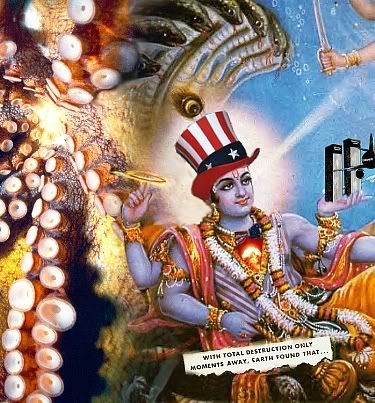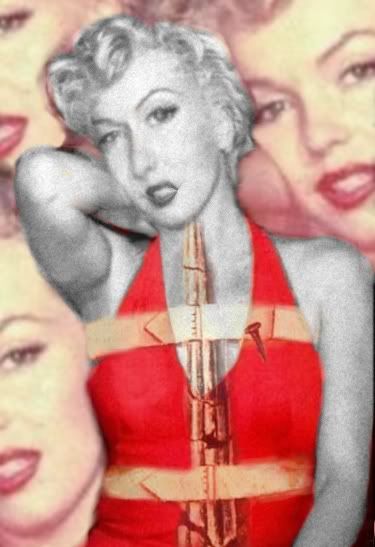No Guru, No Method, No Teacher

Thanks for the information: "Never give a sucker an even break"
When he's breaking through to a new level of consciousness
There always seems to be more obstacles in the way - Van Morrison
How to "Question Authority," when it's Authority telling us how to question it?
The year 1956 saw the launch of the first "Disclosure Project," and a model for those that followed. The National Investigations Committee on Aerial Phenomena, or NICAP, was a civilian lobby group which called for an end to the US Air Force's embargo on its UFO data. By the mid-50s America already had a number of UFO organizations, but NICAP was to become the largest, and most aggressively dedicated to ending official secrecy.
For an organization with such an outre mandate, and supposed civilian composition, it boasted a lot of heavy brass. As Richard Dolan details in his UFOs and the National Security State, three US admirals sat on NICAP's first board: Rear Admiral Delmar Fahrney, former head of the Navy's guided missile program; Vice Admiral Roscoe Hillenkoetter, first director of the CIA; and Rear-Admiral HB Knowles. Another early board member was Bernard Carvalho, who soon headed up its membership committee. Researcher Philip Coppens notes that Carvalho "was often used as the go-between for private companies owned or run by the CIA, such as Fairway Corporation, an airline company used by the heads of the CIA." If all that wasn't spooky enough, NICAP's first Vice-Chairman was White Russian emigre Count Nicolas de Rochefort who incidentally, and unknown to earnest Chair Donald Keyhoe, served as a member of the CIA's psychological warfare staff.
At the Agency, Rochefort answered to Colonel Joseph Bryan. In late 1959 Bryan, representing himself only as an Air Force officer, approached Keyhoe and asked to see his "really hot cases." Keyhoe, on his guard, refused. Bryan then made a series of public statements about the off-world aspects of the phenomenon, criticizing official secrecy. Keyhoe was finally put at ease, and Bryan too joined the board.
Now, what do you think became of NICAP, and the state of American UFOlogy, for having all these impressive insiders "onboard"?
In 1962 NICAP was at its most popular, and appeared close to surprising success. "In February," Dolan writes, "a plan was germinating among congressmen to end UFO secrecy using a statement by Roscoe Hillenkoetter, by far NICAP's most prestigious member." Keyhoe was instrumental in mapping a strategy with sympathetic congressmen for opening the government's records, and it was understood Hillenkoetter's reputation was the key to getting a serious hearing on the floor. Before Keyhoe could visit the Vice Admiral to plan their next steps, Hillenkoetter announced his resignation from NICAP, stating that he had no intention of proceeding with either an investigation or a statement to Congress, and that the Air Force was "doing all it could" with respect to UFOs. The organization, and Keyhoe, took a huge credibility hit from which neither would ever recover.
By the end of the decade, Bryan had engineered Keyhoe's dismissal, and replacement by an outsider named John Acuff who had formerly served as executive director of the intel-connected Society of Photographic Scientists and Engineers (SPSE). Acuff's management, says Dolan, was either wholly inept or deliberate sabotage: he ended Keyhoe's subcommittee system, told regional members to operate independently and discouraged cooperation, declared all data to be NICAP proprietary knowledge which could not be freely disseminated, and criticism of government UFO policy was no longer permitted. Acuff was succeeded by Alan Hall, a "former CIA covert employee for 30 years," as noted in 1979 by The New York Times Magazine. NICAP, which Nick Redfern in his On the Trail of the Saucer Spies calls "the one organization more than any other that had caused major headaches for officials when it came to the UFO controversy," finally folded the following year. Redfern adds that "some would argue that the downfall of NICAP had been the ultimate intent of the CIA from the beginning," though Colonel Bryan's son contends that "my father’s unswerving, outspoken faith in UFOs...was, I felt, something of an embarrassment.... I do not believe it was the sort of public position an agent would take whose covert goal was to smother interest in UFOs."
On the other hand, you can squeeze the life out of a thing if you embrace it hard enough.
I remember the giddy buzz a couple of years ago when Morgan Reynolds became the first figure who could be called a "Bush insider" stepped up as a "9/11 Truth" advocate, and not the most humble one at that. His splashy website and his speaking engagements quickly carried him to the forefront of the "movement's" second wave of leadership - which, unlike the first, is largely consumed by speculative issues of controlled demolition (Reynolds wrote that "WTC demolition is truth inviolate"). It was then that his theories became increasingly bizarre and his conduct particularly divisive and fractious. Now, the planes themselves were hoaxes, and the buildings demolished by "directed energy" beam weapons. Among those signing on to Reynolds' theories was David Shayler, "former MI5 agent turned whistleblower", who alleged last September that "The only explanation is that they were missiles surrounded by holograms made to look like planes." (The Sunday Times smartly remarked, "are we sure this isn’t an MI5 agent posing as Shayler in an attempt to discredit him?")
Bill Christison, a 29-year CIA Veteran and former director of the agency's Office of Regional and Political Analysis, has written that "An airliner almost certainly did not hit The Pentagon. Hard physical evidence supports this conclusion.... The North and South Towers of the World Trade Center almost certainly did not collapse and fall to earth because hijacked aircraft hit them.... These first two points provide the strongest evidence available that the 'official story' of 9/11 is not true." Retired Major General Albert Stubblebine, former director of the US Army Intelligence and Security Command and military patron of remote viewing, now says "I look at the hole in the Pentagon and I look at the size of an airplane that was supposed to have hit the Pentagon. And I said, 'The plane does not fit in that hole.' So what did hit the Pentagon? What hit it? Where is it? What's going on?" And Paul Craig Roberts, Assistant Secretary of the Treasury in the Reagan administration and former Associate Editor of the Wall Street Journal, writes "I will begin by stating what we know to be a solid incontrovertible scientific fact. We know that it is strictly impossible for any building, much less steel columned buildings, to 'pancake' at free fall speed. Therefore, it is a non-controversial fact that the official explanation of the collapse of the WTC buildings is false."
What credibility is lent Roberts for having served under Reagan, or for having been in The National Review's radical right stable? ("In their hatred of 'the rich,'" Roberts has also written, "the left-wing overlooks that in the 20th century the rich were the class most persecuted by government. The class genocide [in communist societies] of the 20th century is the greatest genocide in history.") Before "9/11 Truth," Reynolds was calling for the rolling back of US labor regulation, claiming that a minimum wage contributes to unemployment. To those who argue Left and Right are false dichotomies perhaps it doesn't matter, and such characters merely represent the Truth Movement's "Big Tent." But to those who see in 9/11's outline a brutish war of the wealthy few upon the world's many poor, perhaps it should matter a great deal.
Is it a sign of health that such figures have elbowed their way to the front? If he were still alive, we could ask Donald Keyhoe. What should we make of their laser-like focus upon Pentagon missile theory and demolition? Is it confirmation that the movement is on the right track, or that it's gone off the rails and is being led further afield? Why are none of them apparently interested in talking about, say, Norman Mineta's testimony before the 9/11 Commission ("Do the orders still stand?"), and its excision from the commission's video archive and published record? Why are insiders not to be trusted, and their authority rejected, until they begin telling us what some of us want to hear? Then, suddenly, they become guileless figures in the know who do again what they did before: lead us.







